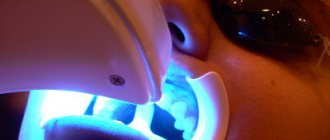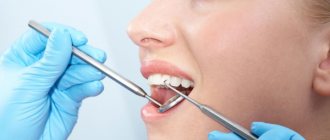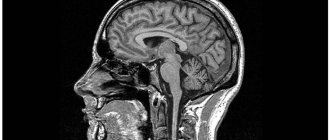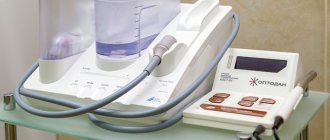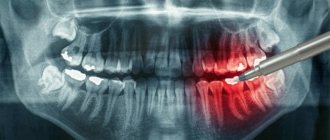Importance of X-ray equipment for dentistry
Any medical and diagnostic institution must have in its arsenal an X-ray machine with expanded functionality and modernized capabilities.
The field of dentistry is not spared either, since dental x-rays serve as the main diagnostic point in making a diagnosis and prescribing appropriate treatment. In this regard, the relevance of the criteria for choosing this device is only growing and gaining momentum. The well-known film X-ray machines are considered an “outdated” technology, which is being replaced by a variety of digital solutions in the form of a stationary, portable, mobile or portable device. High-tech digital X-ray machines open up new opportunities for doctors, allowing them to take high-quality snapshots of teeth and the dental cavity, while minimizing exposure to themselves and the patient.
An X-ray machine is an indispensable tool that, due to the unusual structure of the human jaw area, helps to diagnose diseases and characteristics of the teeth and gums, study the condition of the nasal and maxillary sinuses, and also allows you to create an exact copy of dentures and implants.
In this regard, the issue of choosing a dental X-ray machine for your clinic must be approached thoroughly and with all responsibility. Paying hundreds of thousands for low-quality equipment is a normal fear of every person, and therefore, we are suppliers of the best dental equipment GoldiDent
In this article we will tell you what you should pay attention to when choosing an X-ray machine and how to choose high quality at a low cost.
Situations when taking photographs is strictly prohibited
Such situations practically never occur. On an individual basis, X-rays are considered in cases where the patient receives radiation in other areas of life: for example, in hazardous work, while undergoing chemotherapy or radiation therapy. But again, when X-raying the state of the jaw system, the radiation is so small that it will not affect the overall picture.
Thus, you should not be afraid to take photographs - in single quantities they are quite acceptable and will not affect your health at all.
It is important to understand that such diagnostic procedures allow for better treatment, especially with dental implantation, the results of which will last not a couple of years, but for many years of life. 1 Sanitary rules and regulations (SanPiN) 2.6. 2.6.1.1192-03 for the design and operation of X-ray rooms, devices and the conduct of X-ray examinations.
Types of X-ray machine for a dental clinic
Where should you start when choosing a dental x-ray unit? We recommend asking yourself a few questions, the answers to which will become the determining individual criteria for your future device.
- What budget are you looking for?
- Do you need additional functionality of the device or are the standard functions sufficient?
- What operating conditions are planned for your clinic?
- Are X-ray diagnostics planned to go to patients’ homes?
- How often is it planned and is it even planned to transport the device around the clinic?
As soon as the answers to these questions are ready, you can move on to a more detailed study of possible dental X-ray machines.
1. Stationary X-ray machines
- equipment that is intended exclusively for work in one limited space (X-ray room).
2. Mobile X-rays
— this type of device is often used in hospital settings, where regular movement of equipment is necessary. It is convenient to move such equipment across floors, to transport it directly to the bedside of a seriously ill patient, and comfort for nurses or doctors who work with transporting this type of X-ray is ensured by a reliable vertical stand with comfortable wheels and automatic brakes.
In addition to using such mobile equipment in a hospital setting, it does its job well in the field. X-ray machines with a mobile mechanism easily fit into the car.
3. Portable X-rays
— devices are comfortable, small-sized equipment that allows you to perform diagnostics at a high professional level without interrupting your work. This device is especially relevant for seriously ill people, as well as for people with limited mobility. The compact device is light in weight and can significantly reduce the time spent moving patients to the X-ray room and waiting for images to be developed.
You should choose one or another type of device based on the planned placement and purpose of use. Thus, the purchase of mobile units would be appropriate for wards in hospitals, since they are fully adapted to these functional conditions. Another important point will be the choice of equipment power.
Important! The power depends on the type of device and its manufacturer. The average power of mobile X-ray equipment is 13.0 -32 kW. A stationary X-ray machine has a minimum power of 40 kW.
The X-ray unit itself should be selected taking into account the goals, capabilities and conditions of the dental clinic.
Equipment service
The set of measures to restore medical devices and keep them in good condition depends on the type of equipment; therefore, service is individual for each type of X-ray equipment.
Service activities include technical work, which includes:
- Commissioning.
- Checking and monitoring technical condition.
- Planned and routine maintenance.
- Current repair or restoration.
All X-ray equipment must undergo a post-repair inspection, which is regulated by the operating instructions.
Qualified specialists of our company are ready to provide service for your clinic’s dental equipment.
Dental X-ray machine and its types
At the moment, analogues for X-ray diagnostics have not yet been invented, so it is so important to choose high-quality equipment that will improve the quality of the clinic’s work.
Despite the wide range of X-ray equipment, experts still recommend choosing dental devices, since this type of equipment has higher power ratings.
For effective dental procedures and manipulations, digital devices are recommended, which have already been tested many times by doctors and patients in the dental field. This equipment provides quick acquisition of high-quality images of the dental cavity, which do not require development and can be stored in computer memory for decades. This is convenient, because any doctor, at a subsequent appointment, can trace a clear chronology of the treatment of a particular tooth.
It is worth understanding that such equipment has a relatively high pricing policy, but the technical and power parameters have no comparison. Requirements for diagnostic dental procedures are growing from year to year, which means that X-ray equipment must meet all these requirements.
Modern digital dental X-ray machines are represented by the following technology options.
Tomograph
Expensive equipment that allows for a comprehensive examination. Thanks to a computed tomograph, doctors have the opportunity to obtain a 3D image of the oral cavity with 100% quality, which indicates the trajectory of dental canals, hidden suppurations and much more. When paired, a conventional X-ray machine has only 40% clarity.
Using special software, doctors can obtain two-dimensional images that make it possible to treat perpendicular dental arches.
Using a dental tomograph eliminates the possibility of receiving erroneous data, which is not a joy with older X-ray machines.
It is important to remember that tomographs are expensive equipment, but the price may vary depending on the set of functionality.
Orthopantomograph
This equipment is designed to take clear and precise photographs of the tooth, dentition and jaw area.
The orthopantomograph images clearly show the presence of all fillings and difficult to recognize caries cavities, which often form in the cervical area, in the root area and on contact surfaces. The use of this technique allows the doctor to obtain a panoramic (overview) image, thanks to which an accurate diagnosis will be established and, if necessary, the forces of several dental specialists will be concentrated, who will be able to quickly solve the problems of the patient’s oral cavity.
Most analog orthopantomographs involve shooting on a special film, which subsequently undergoes a developing procedure. In this regard, this type of dental X-ray machine is in reduced demand among clinics.
Visiograph
This equipment is a complex of digital diagnostics. The use of visiographs is convenient, as it eliminates the need to develop photographic film and use various chemicals. This technique is popular because it has a low level of radioactivity and a high level of efficiency (about 95%).
The visiograph is used to identify complex forms of caries, pulpitis and periodontitis, as it allows you to identify microscopic abnormalities in the structure of the tooth. This undoubtedly affects the correctness of the diagnosis and subsequent treatment.
The modern dental equipment market provides a wide range of visiographs, both wired and wireless. The wireless version of equipment is in greatest demand, since, according to statistics, it lasts much longer than wired equipment. The wired device fails after 2-6 months.
Important! A dental X-ray machine must fully comply with the requirements of SanPiN, have licenses and all documentation.
When choosing a dental X-ray machine, we recommend purchasing equipment only from well-known brands and only through well-known channels. Poor quality technology does not provide a 100% guarantee of the safety of the patient and the doctor, and also reduces the effectiveness of the diagnosis, which negatively affects the diagnosis and subsequent treatment. Based on all possible risks, you should familiarize yourself in detail with the characteristics of the devices and not be greedy in material terms. The thousands saved will be spent after six months of operation of the X-ray machine on its repair and restoration.
Is it possible to carry out diagnostics during pregnancy?
According to SanPiN, X-ray examinations are allowed in the second half of pregnancy using protective equipment, provided that the radiation dose does not exceed the same 1000 μSv. However, it is recommended to refrain from taking x-rays in the first and last 12 weeks, i.e. in the first and last trimesters.
Do not be afraid of undergoing diagnostic procedures during pregnancy. Even ordinary caries is an infection that, if not properly treated, can spread throughout the body and lead to infection of the fetus. Therefore, it is better to receive a small and completely safe dose of radiation than to carry out complex dental treatment blindly, not knowing how deep the inflammatory process is.
After the baby is born, i.e. During breastfeeding, dental x-rays can be taken, even more than once (within reasonable limits). Radiation doses are minimal, so radiation does not accumulate in breast milk, and there will be absolutely no harm to the baby. There is also no need to pump or skip feedings.
The most popular dental x-ray machines
X-ray machine MyRay RXDC Wired (eXTend)
This is equipment that is distinguished by its compactness and simple functionality.
This equipment is a high-frequency wall-mounted device, which has a low focal spot size of 0.4 mm. The manufacturer of this equipment has provided a 12-inch collimator, and its counting ensures exceptional parallelism. An anti-vibration system is provided, which eliminates the possibility of image distortion. When working with this X-ray machine, the patient receives a minimum radiation dose, which is 4 times lower compared to outdated versions of X-ray equipment.
The manufacturer also provided additional options in the form of: radio emission load indicator, remote connection of the on button, blocking the exposure button and the ability to synchronize with other equipment.
X-ray machine Kodak CS2200
This is a wall-mounted high-frequency X-ray machine that has a focal spot size of 0.7 mm and is also equipped with an ergonomic timer.
Thanks to the high-frequency development of the generator, the risk of radiation exposure is reduced by 30%. This device is distinguished by a competitive price and different variations of wall mounting: vertical version, left/right oriented version, the ability to use a mobile stand.
X-ray machine EzRay Air Wall (VEX-S300W) wall mounted
This high frequency X-ray equipment features an innovative lightweight X-ray tube that weighs only 2 kg and 400 grams. This part simplifies operation and stabilizes conditions for safe use. The equipment is equipped with a single panel and the best image quality characteristics, since the focal spot size is only 0.4 mm.
X-ray machine Evolution X3000 rolling
A high-frequency rolling X-ray device, which is designed to obtain targeted images of the oral cavity.
The device is equipped with an automatic protection system against malfunction in the event of a discrepancy between exposure and radiation dose, which was initially declared by the manufacturer. The equipment is designed in accordance with all SanPiN requirements and has: a double pantograph lever, has the ability to be wall mounted, remote control of the device with an activity zone of up to 10 meters, rotation of the unit 360 degrees.
The focal spot is 0.8 mm in size.
X-ray machine Fona XDC
High-frequency, state-of-the-art X-ray unit with a focal spot of 0.4 mm.
Excellent image quality and minimal radiation dose are all the advantages of this technique. This equipment can be used as portable equipment, or can be mounted on a wall. This X-ray machine is perfectly compatible with all types of equipment, and also has a precise timer that allows you to pre-set all shooting parameters.

